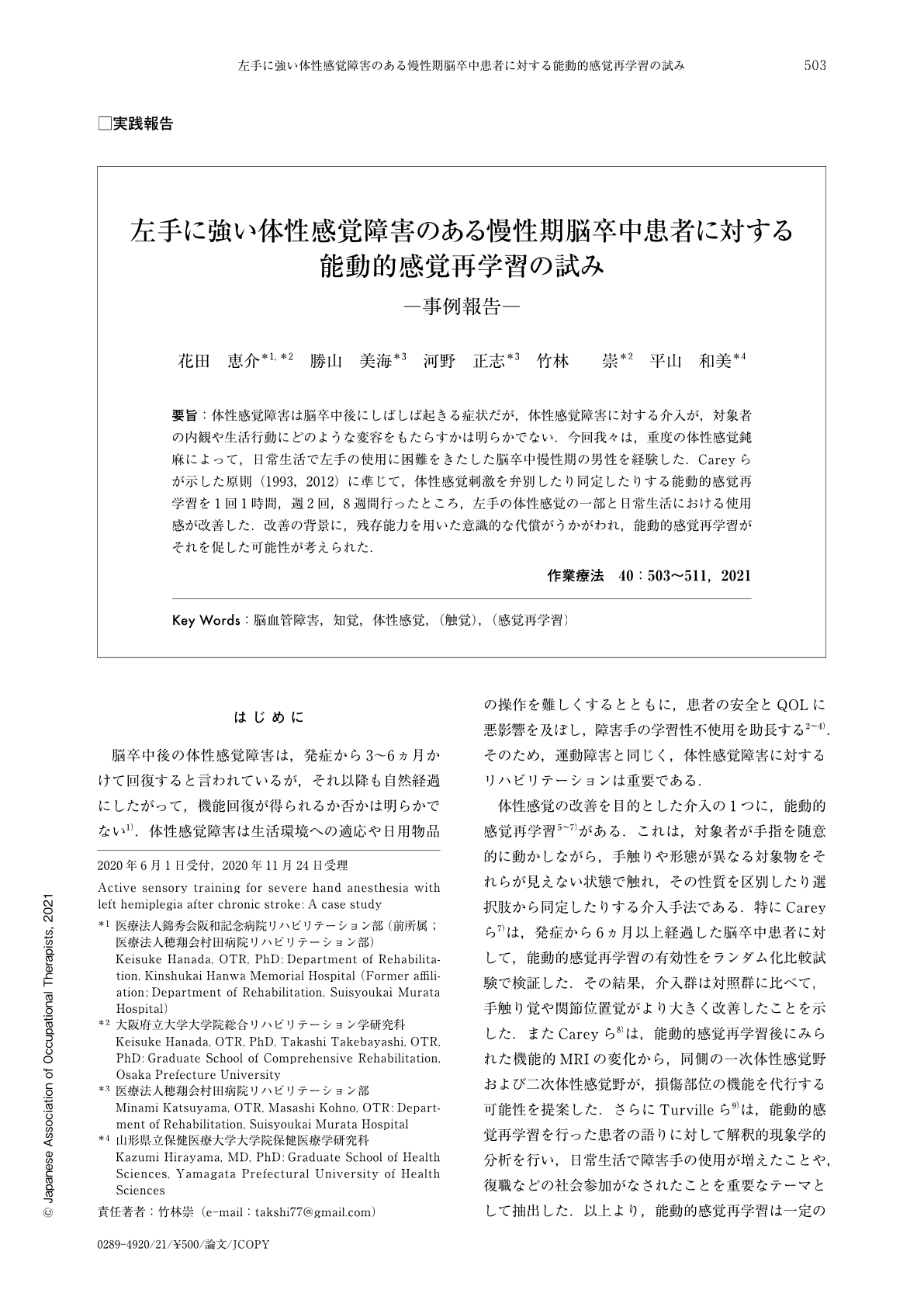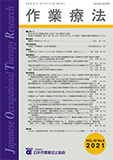Japanese
English
- 販売していません
- Abstract 文献概要
- 1ページ目 Look Inside
- 参考文献 Reference
- サイト内被引用 Cited by
要旨:体性感覚障害は脳卒中後にしばしば起きる症状だが,体性感覚障害に対する介入が,対象者の内観や生活行動にどのような変容をもたらすかは明らかでない.今回我々は,重度の体性感覚鈍麻によって,日常生活で左手の使用に困難をきたした脳卒中慢性期の男性を経験した.Careyらが示した原則(1993,2012)に準じて,体性感覚刺激を弁別したり同定したりする能動的感覚再学習を1回1時間,週2回,8週間行ったところ,左手の体性感覚の一部と日常生活における使用感が改善した.改善の背景に,残存能力を用いた意識的な代償がうかがわれ,能動的感覚再学習がそれを促した可能性が考えられた.
We observed a male who suffered from severe somatosensory anesthesia that continued for six months after a stroke. He received an active sensory relearning program for 1 hour, twice a week, for 8 weeks. He repeatedly performed various tactile discrimination and identification tasks (Carey, 1993, 2012), in which the clinician asked him to visually confirm the correctness of the task and to compare it with the sensation of the affected hand by touching the non-affected hand. The difficulty of each task was adjusted for differences in the number of choices and stimuli. As a result, the affected arm use in daily life and somatosensory functions were improved, and accompanying changes in daily life were also reported. The active, sensory re-learning may have facilitated conscious compensation that uses residual function. Such compensation may have contributed to the improvement of the patient's somatosensory function and activities of daily living.

Copyright © 2021, Japanese Association of Occupational Therapists. All rights reserved.


